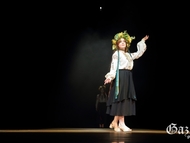
“In every walk with nature one receives more than he seeks,” mused John Muir, a Scottish-born American naturalist. Until recently, the closest I had ever come to South Korea’s “nature,” and its seemingly innumerable array of mountains, was from the comfort of my home. I would gaze upon the jagged peaks of Palgong Mountain from my window on a sun-kissed Sunday afternoon, contemplating their vastness and the sweat and toil of the many eager hikers determined to scale them. “Sunday is a day of rest”; softly sighing this old adage to myself, I would settle down to yet another lazy Sabbath day upon the sofa.
One weekend this February, however, I was struck by the folly of my attitude. While riding the subway downtown to meet some friends, I encountered scores of middle-aged male and female passengers draped in hiking attire. These people were no amateurs. Each one of them was decked-out in the best of hiking gear: boots, gloves, backpacks, poles, hats, and waterproof jackets. Overcome by the enthusiasm of these aging adventurers, I was forced to recognize the laziness of the lifestyle I had fallen into. How could I, not yet thirty, waste my weekends in domestic idleness while the grandparents of a nation rose at dawn to trek up mountains? The challenge before me was clear. Shakespeare was correct when he said that “action is eloquence.” From that day forth, I would let my deeds speak for me and follow these weather-beaten veterans of hill and valley into the great outdoors!
The first few weekends I engaged in my new hobby were far from easy and not without drama. Palgong Mountain, which had been about as “real” as a postcard picture to me in the past, was to be the site of my first hiking adventure. As I trudged up the huge stone steps toward Gatbawi, I was made embarrassingly aware of my own physical limitations. I would stand drawing breath on one of my regular breaks while old women strode unflinchingly toward the summit. These women, faces lined with wrinkles as deep as the cracks in the cliffs above me, were models of vitality. Some walked barefoot, others supported themselves with sticks, but all of them exuded an indomitable spirit quite alien to me. Inspired by their example, I continued my route upwards, passing the great granite Buddha and floods of worshippers on their knees.
As I reached the upper echelons of the mountain, I came to understand Muir’s notion that he who walks out into nature “receives more than he seeks.” Of course I expected stunning views of snow-capped peaks, vast valleys and wooded ravines – and nature duly delivered. I received much more than sensory satisfaction though. I gained a deeper insight into Korea and the older generation’s connection to the land itself. Like the ancient rocks and stones I trod upon during my ascent, these people are solid and unbreakable. They embody a hardiness, an inner strength which is to be admired. Like the mountains, they have seen rain and shine, snow and storm, but they do not curse and complain. Instead, they continue on their almost endless journey, sometimes smiling, sometimes sneering, but never stopping for too long.
When the sun began to set, and the leafless trees cast skeletal shadows on the murky trail beneath me, I decided that it was time to begin my descent. I felt a kind of lingering sorrow with every careful step I took on the path downwards. I experience this feeling each time one of my expeditions reaches its inevitable climax. It is the sense of losing the boundless freedom and clarity that the wilderness provides. To prolong my journey, I chose a long and unfamiliar trail to the mountain’s base. The last dying rays of the sun squirmed through the trees as I passed lonely hermitages, narrow frozen streams and the huge unweeded tombs of people long forgotten by the bustling city below. These somber sights were my last memory of my first giant leap into Daegu’s great outdoors.
I am happy to say that this journey proved to be the first of many. I now see every weekend as a new opportunity to escape from the busy city and explore some other facet of rural Korea. In the weeks following my first adventure I have scaled the heights of Apsan, Biseulsan, Waryongson, and most recently, Seoraksan in Gangwondo. Korea’s national obsession – hiking - has become my own. I now realize that the mountains we see in the distance are not merely there for photo opportunities. They beg our presence and lie in wait for the patter of our feet. Most importantly, these remote places give us the peace and solitude to find out something more about ourselves and the natural world that surrounds us.
By Prof. Stephen McGuckin, M.Litt.
Dept. of English Lang. & Lit.
Dept. of English Lang. & Lit.








